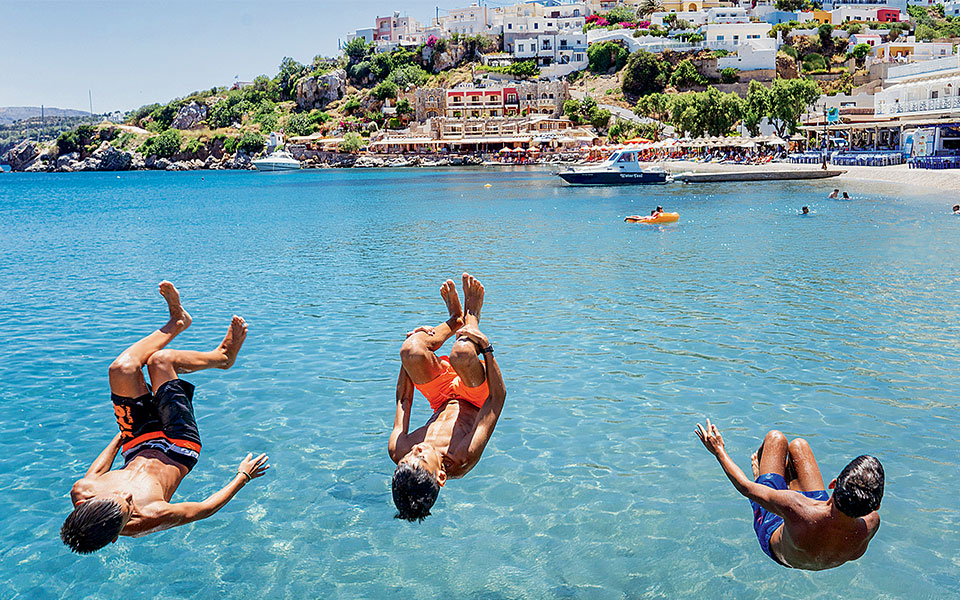EXPLORE LEROS
ITALIAN LEGACY: Lakki, one of southern Europe’s largest natural harbors, was a swamp until the early 1920s, when Italian dictator Benito Mussolini decided to build a whole city there from scratch in order to establish a base for the Royal Italian Navy and accommodate thousands of military personnel and their families. The responsibility for creating this fascist utopia was given to architects Rodolfo Petracco and Armando Bernabiti. The resulting town, which the Italians named Portolago, is considered to be the only true rationalist town outside of Italy – and has been dubbed “the weirdest town in Greece.”
A mix of Modernist, Bauhaus, Renaissance, Venetian and Islamic elements, with large light-colored surfaces, horizontal openings and Cubist whimsy, makes Lakki particularly interesting for architecture aficionados. The most striking buildings are the former customs’ office; the restored Art Deco cinema, Cine Leros, which is still in use; a now-defunct hotel; and the circular market hall with its austere clock tower.
Info
- Area: 54 sq. km.
- Population: 7,920 (2011 census)
- Distance: 171 (sea miles from Piraeus)
- Highest Peak: 327m (Kleidi)
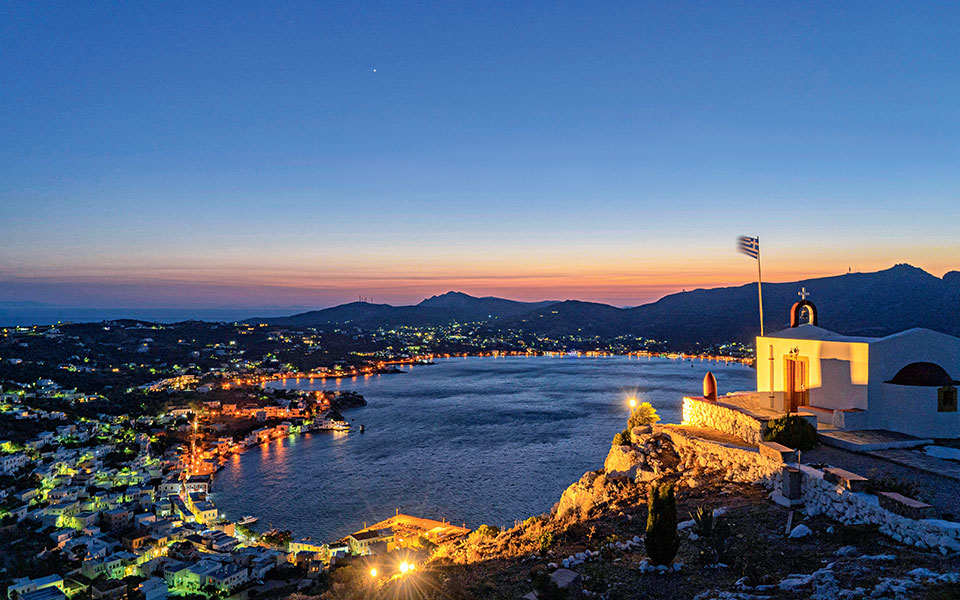
© Perikles Merakos
VANTAGE POINT: Drive or walk up the footpath from Platanos to the Castle of Panteli (aka the Castle of the Panaghia). This well-kept site has traces of many different historical periods, all in one place, and a stunning panoramic view. It’s not precisely clear when the castle was first built, although manuscript sources indicate that it already existed in 1087. The fortifications added by the Knights of St John are clearly visible, marked with their coat of arms. In the modern era, the Italians used it as a barracks and lookout post. Inside its walls, you can find the churches of Panaghia and Frangoklissia.
A SINGULAR CHURCH: Aghia Kioura (or Aghia Matrona) is probably like no other church in Greece. Its icons and murals were painted by dissidents exiled to Leros by the Greek military junta of 1967-1974. Their portrayals of saints have a modern, humanistic air and evoke a strong emotional response from the viewer. If you do make the trip to the northeastern coast of the island, where the church is located, make sure to take a swim in the gorgeous turquoise waters of the beach right below.
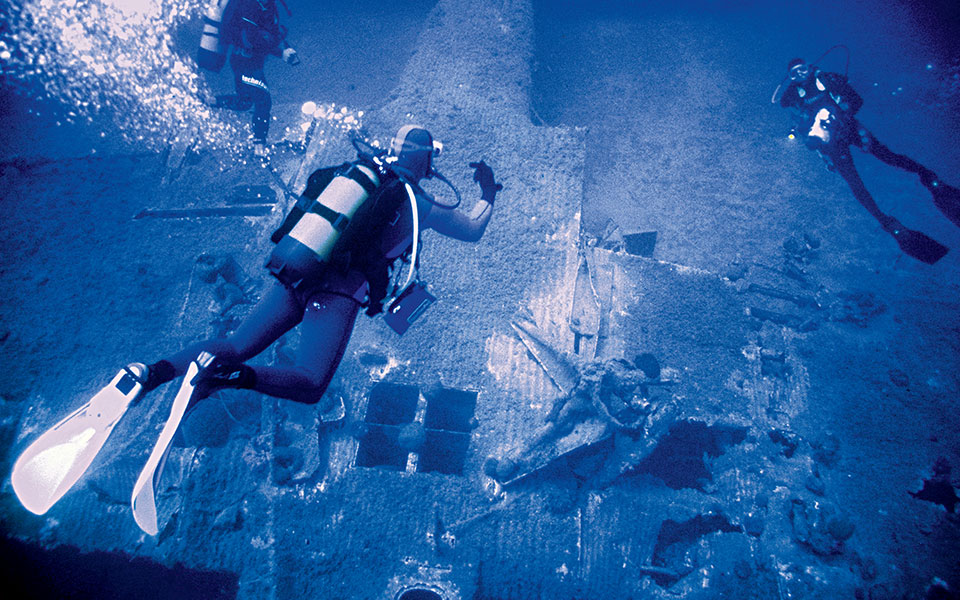
© V. Mentoyiannus/On Location
FOCUS: TRACES OF WAR
By John Leonard
In now-tranquil Leros, one might never suspect the ferocity of battle experienced by native Lerians and their Greek, British and Italian defenders during the dark days of World War II. Thanks to the port of Lakki, the presence of a major Italian naval base, and the island’s formidable coastal artillery guns, Leros was a highly prized target for both Axis and Allied powers.
Following Italy’s surrender, on September 8, 1943, Germany launched an intensive aerial bombardment (September 26-October 31), then a “boots-on-the-ground” invasion (November 12). After four days of coastal landings, paratrooper drops and fierce hand-to-hand combat – with many civilians seeking safety in tunnels and caves – the Allies capitulated on November 16.
Today, Leros is a history lover’s paradise, with preserved coastal batteries; the Tunnel War Museum (Merikia); the Archaeological Museum and Kastro (Aghia Marina); and Beleni Tower’s exhibitions (Alinta). Offshore, numerous barges, landing craft, airplanes and anti-submarine nets remain visible on the seabed all around the island.
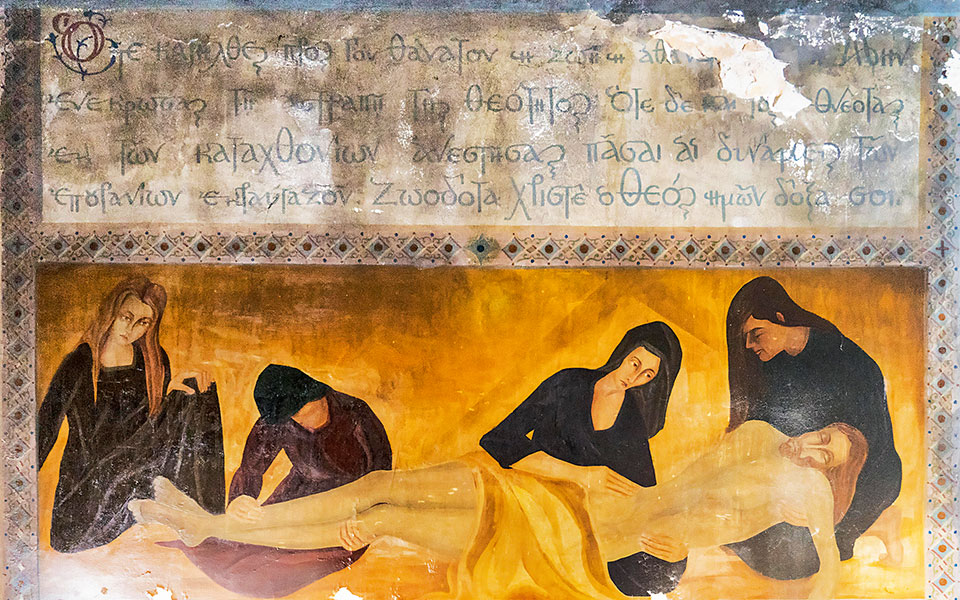
© Perikles Merakos
EXPERIENCE
BEST SWIMS: Leros’ coastline is a 78-km lacework stretch of beaches and coves offering abundant bathing options. Most beaches with umbrellas, sun loungers and refreshments are concentrated around the large bay of Alinda. You’ll also find cafes and tavernas at the beach at Panteli, 1.5 km from Aghia Marina. Vromolithos is also close by and has a smattering of beach umbrellas, as well as tamarisk trees for shade.
On the western coast, sandy Gourna has all the requisite facilities, making it ideal for families with younger children. In the south, Xirokambos offers plenty of natural shade. Nearby, you can visit the beautiful little church of Panaghia Kavouradaina. It’s not just its location that’s special – it appears to be trapped between the rocks by the sea – it also is home to an unusual icon of the Virgin Mary, depicted framed by the claws of a crab. Legends abound as to the provenance of the icon; all involve crabs and fishermen eager to pay tribute to the Mother of Christ.
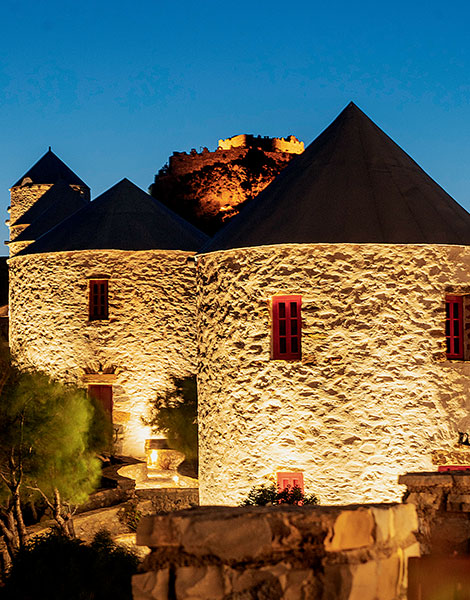
© Perikles Merakos
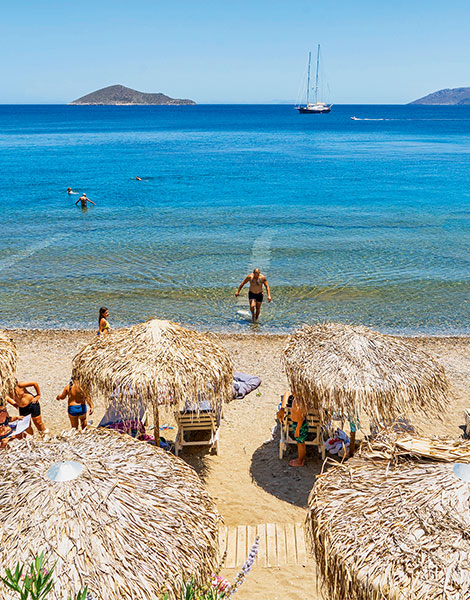
© Perikles Merakos
THE DEEP: Leros is a famous scuba diving destination with more than 10 wrecks lying just off its coast. The most impressive of these is the Greek warship Vassilissa Olga, which was sunk in a German air raid on Lakki harbor in 1943. You’ll find instructors and all the gear you need to explore the marine environment at the Hydrovius Dive Center (Tel. (+30) 22470.260.25).
MADE FOR WALKING: If you’re fond of hikes, there are trails all across Leros. Most of them are quite easy and will take you past remains of different Italian military installations, which can be seen all over the island. One of the most charming routes is from the village of Xirokambos, in the south, to the Cape of Diaporo. It takes between an hour and an hour and a half to walk the 4.5km trail; along the way, you’ll spot an old Italian military structure with wall paintings made by soldiers during World War II.
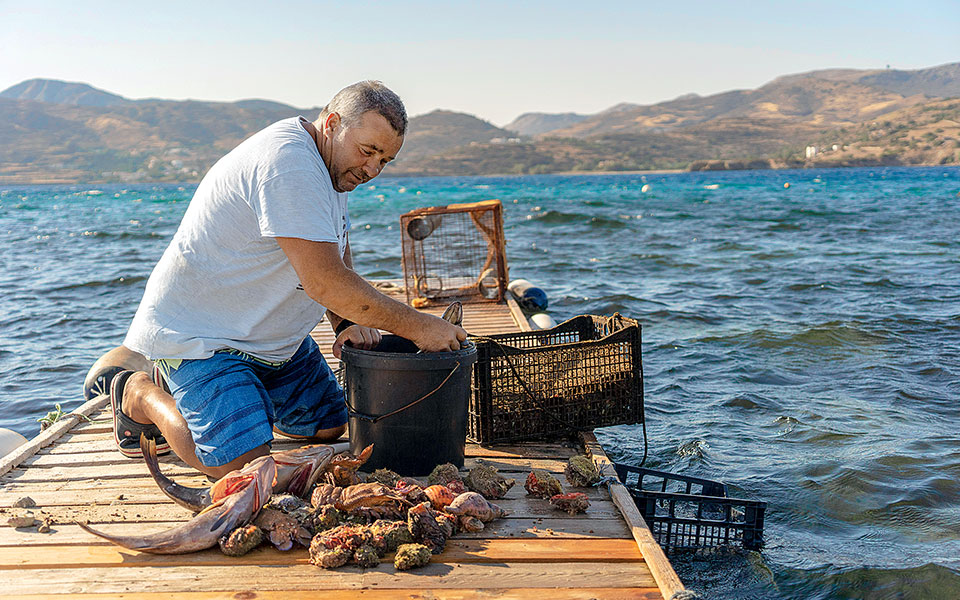
© Perikles Merakos
TASTE
HAPPY MEALS: Local fishermen bring in fresh fish and other seafood every morning. At Karaflas, above the beach of Vromolithos and with a view of the sea, you can order meze and dishes such as octopus carpaccio, mussels with rice, and cured or grilled fish. At Sotos, in the small fishing village of Drymonas, musts include the dusky grouper, the pasta with lobster and the shellfish harvested by the owners.
For a more sophisticated dining experience with a selection of top Greek and international wines, head to Mylos in Aghia Marina, right next to the sea. If it’s meat you’re craving, your best option is Petrino in the Italianate market hall building in Lakki. It’s known for its amazing grilled steaks, souvlaki and chicken, as well as spit-roasted delicacies.
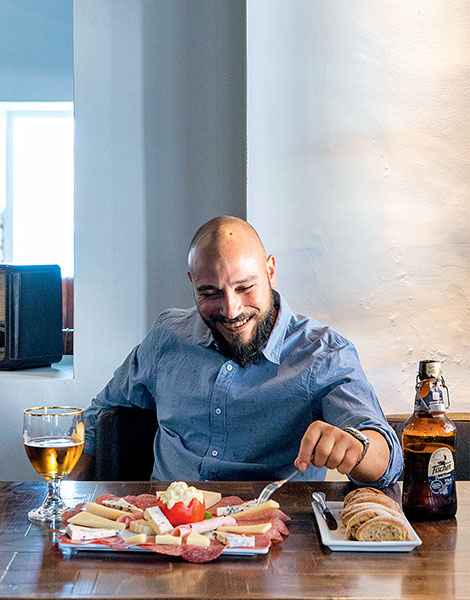
© Perikles Merakos
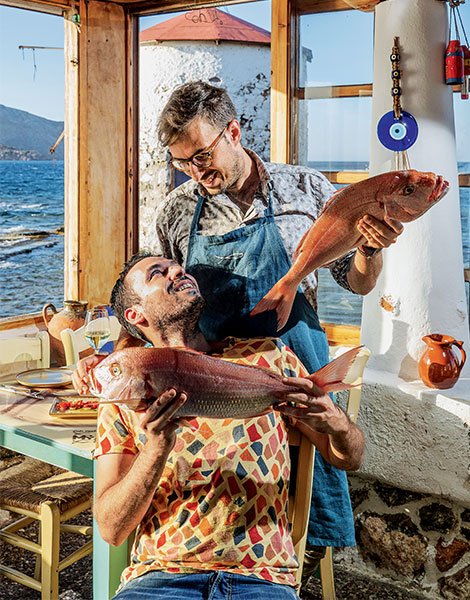
© Perikles Merakos
DESSERT ISLAND: As its Greek name suggests, Theiko (“divine”) in Lakki sells tantalizing traditional sweets such as pougia (small pastry pouches stuffed with nuts and honey), amygdalota (almond cakes) and xerotigana (syrup-drenched dough fritters sprinkled with nuts, as well as cakes and homemade ice-cream.
At Sweet Leros 1897 in Panteli, a dessert shop with décor which resembles a traditional house, you can get delectable galaktoboureko (custard pie), loukoumades (deep-fried dough pastries soaked in syrup), almond biscuits and rose-geranium liqueur made in-house. For patsavouropita (a local sweet pie), fritters and almond-stuffed pougia, check out Paradosiako, in Aghia Marina.
NIGHTLIFE: Calvo Café-Pub in Aghia Marina is located in a beautiful old building right by the sea and serves delicious, quite imaginative cocktails and snacks. Thanks also to its good music, it has become a favorite among locals and visitors alike. Also in Aghia Marina, the bar Meltemi hosts themed nights dedicated to jazz, blues or rock music.

